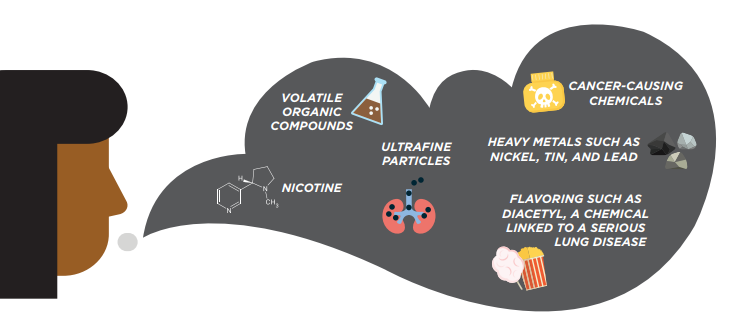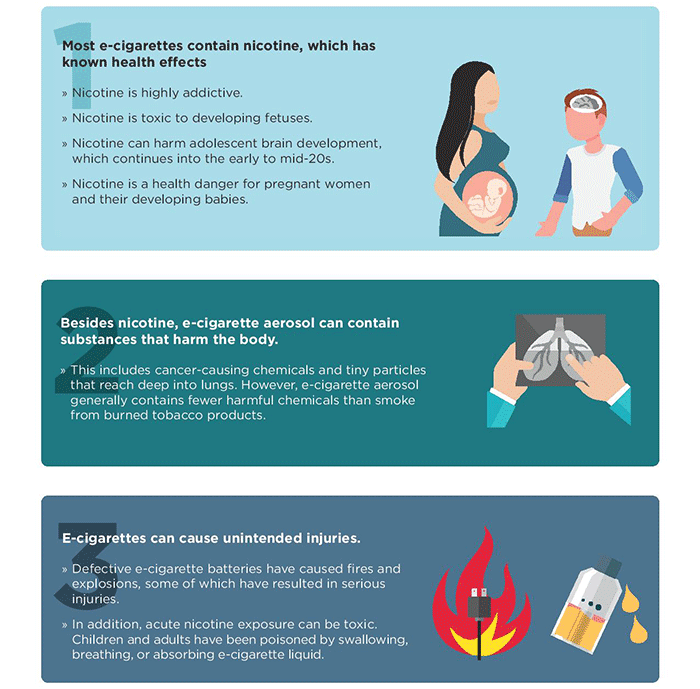E-cigarettes come in many shapes and sizes. Most have a battery, a heating element, and a place to hold a liquid. E-cigarettes produce an aerosol by heating a liquid that usually contains nicotine—the addictive drug in regular cigarettes, cigars, and other tobacco products—flavorings, and other chemicals that help to make the aerosol. Users inhale this aerosol into their lungs. E-cigarette aerosol is not harmless. It can contain harmful ingredients.

E-cigarettes are still fairly new, and scientists are still learning about their long-term health effects. Here is what we know now:
- Most e-cigarettes contain nicotine, which has known health effects.
- Nicotine is highly addictive.
- Nicotine is toxic to developing fetuses.
- Nicotine can harm adolescent brain development, which continues into the early to mid-20s.
- Nicotine is a health danger for pregnant women and their developing babies.
Besides nicotine, e-cigarette aerosol can contain substances that harm the body.
This includes cancer-causing chemicals and tiny particles that reach deep into lungs. However, e-cigarette aerosol generally contains fewer harmful chemicals than smoke from burned tobacco products.
E-cigarettes can cause unintended injuries.
Defective e-cigarette batteries have caused fires and explosions, some of which have resulted in serious injuries. Most explosions happened when the e-cigarette batteries were being charged.
The Food and Drug Administration (FDA) collects data to help address this issue. You can report an e-cigarette explosion, or any other unexpected health or safety issue with an e-cigarette, here.
In addition, acute nicotine exposure can be toxic. Children and adults have been poisoned by swallowing, breathing, or absorbing e-cigarette liquid through their skin or eyes.

